
The World Cinema Project (WCP) preserves and restores neglected films from around the world. To date, 54 films from Africa, Asia, Eastern Europe, Central America, South America, and the Middle East have been restored, preserved and exhibited for a global audience. The WCP also supports educational programs, including Restoration Film Schools; intensive, results-oriented workshops allowing students and professionals worldwide to learn the art and science of film restoration and preservation. All WCP titles are available for exhibition rental by clicking "Book This Film."
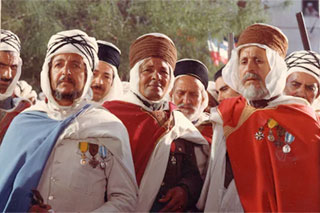
CHRONICLE OF THE YEARS OF FIRE
WAQAI SANAWAT AL-DJAMR
Director: Mohammed Lakhdar-Hamina
WRITTEN BY: Rachid Boudjedra, Tewfik Fares, Mohammed Lakhdar-Hamina
DIRECTOR OF PHOTOGRAPHY: Marcello Gatti
MUSICAL DIRECTOR: Philippe Arthuys
STARRING: Yorgo Voyagis (Ahmed), Mohammed Lakhdar-Hamina (Milud), Leïla Shenna (moglie di Ahmed), Cheikh Nourredine (Si Larbi), Larbi Zekkal (Smaïl), Sid Ali Kouiret, Nadia Talbi, Taha El Amiri, Abdelhalim Rais, Brahim Hadjadj, Hassan El Hassani
COUNTRY OF PRODUCTION: Algeria
LANGUAGE: Arabic and French with English subtitles
COLOR INFO: Color
RUNNING TIME: 177 minutes
PRODUCTION COMPANY: ONCIC (Office National Commerce Industrie Cinéma)
Restored by The Film Foundation’s World Cinema Project and Cineteca di Bologna at L’Image Retrouvée and L’Immagine Ritrovata laboratories. Restoration funded by the Hobson/Lucas Family Foundation.
This restoration is part of the African Film Heritage Project, an initiative created by The Film Foundation’s World Cinema Project, the Pan African Federation of Filmmakers and UNESCO – in collaboration with Cineteca di Bologna – to help locate, restore, and disseminate African cinema.
I tried to recount, with dignity and nobility, this uprising that then became the Algerian Revolution, an uprising not only against the coloniser, but against a certain human condition. I wanted to avoid any kind of Manichaean, caricatural and demagogic approach, which risked turning Waqai sanawat al-djamr into a sort of Western; good against evil, Algerians against French. What guided me was the quest for honesty: I looked inside myself for the honesty of a child, the eyes of the child I once was, the memories of my childhood. […] It would be a serious mistake to distinguish Algerian Cinema, the cinema of the Maghreb, from African Cinema. The cinema of the Third World is one – the Arab World, Africa, Latin America, the Middle East, Asia – as we share the same motivations, the same difficulties, and a common destiny, on an artistic level and on an expressive level. We have suffered hunger and thirst. We will reclaim our image.
Mohammed Lakhdar-Hamina, interviewed by Claude Dupont, “Cahiers de la cinémathèque”,
Summer 1975
NOTES ON THE RESTORATION:
Restored in 4K from the original camera and sound negatives and a first generation 35mm interpositive provided by the filmmaker.
Three different cuts exist of this film: upon Mohammed Lakhdar-Hamina's wish, this restoration reconstructed the version that was awarded the Palme d'or at the Cannes Film Festival in 1975.
The original camera negative, outtakes from the same element, and the interpositive were integrated to match a 35mm vintage print provided by the filmmaker as a reference. Color grading was supervised by Mohammed Lakhdar-Hamina.
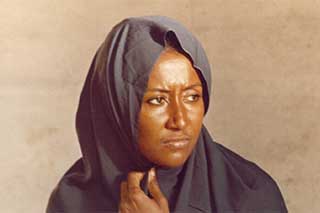
SAMBIZANGA
Director: Sarah Maldoror
EDITING: Georges Klotz
DIRECTOR OF PHOTOGRAPHY: Claude Agostini
STARRING: Elisa Andrade, Domingos De Oliveira, Jean M’Vondo, Adelino Nelumba, Benoît Moutsila, Tala Ngongo, Lopes Rodrigues, Henriette Meya, Manuel Videira
COUNTRY OF PRODUCTION: Angola, France
LANGUAGE: Portuguese, Lingala and Kimbundu with English subtitles
COLOR INFO: Color
RUNNING TIME: 96 minutes
Restored by The Film Foundation’s World Cinema Project and Cineteca di Bologna at L’Image Retrouvée in association with Éditions René Chateau and the family of Sarah Maldoror.
Funding provided by Hobson/Lucas Family Foundation.
This restoration is part of the African Film Heritage Project, an initiative created by The Film Foundation’s World Cinema Project, the Pan African Federation of Filmmakers and UNESCO – in collaboration with Cineteca di Bologna – to help locate, restore, and disseminate African cinema.
NOTES ON THE RESTORATION:
Restored in 4K from the original 35mm negatives. Color grading was supervised by Annouchka De Andrade and cinematographer Jean-François Robin.
With special thanks to Annouchka De Andrade and Henda Ducados.
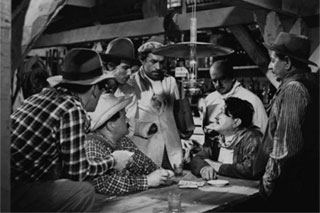
PRISIONEROS DE LA TIERRA
Director: Mario Soffici
WRITTEN BY: Ulyses Petit de Murat, Darío Quiroga
EDITING: Gerardo Rinaldi, José de Nico
DIRECTOR OF PHOTOGRAPHY: Pablo Tabernero
MUSICAL DIRECTOR: Lucio Demare
PRODUCTION DESIGN: Ralph Pappier
STARRING: Ángel Magaña (Esteban Podeley), Elisa Galvé (Andrea), Francisco Petrone (Köhner), Homero Cárpena, Raúl De Lange, Roberto Fugazot
COUNTRY OF PRODUCTION: Argentina
LANGUAGE: Spanish and Guaranì with English subtitles
COLOR INFO: Black and White
RUNNING TIME: 85 minutes
PRODUCTION COMPANY: Pampa Films
Restored by Cineteca di Bologna at L’Immagine Ritrovata and The Film Foundation’s World Cinema Project in association with the Museo del Cine Pablo Ducros Hicken with elements provided by the Cinémathèque Française and the Narodni Filmovy Archiv.
Funding provided by the Hobson/Lucas Family Foundation.
NOTES ON THE RESTORATION:
PRISIONEROS DE LA TIERRA was restored using the best existing elements: a first generation 35mm positive print held at La Cinémathèque française and a recently rediscovered third generation 35mm positive print preserved by the Narodni Filmovy Archiv. For its overall completeness and photographic quality, the first generation 35mm positive print was used to restore the image, while the third generation 35mm positive print was the primary source for sound restoration.
A 16mm dupe negative, provided by the Museo del Cine, has been also been studied and compared as a reference. Color grading was supervised by Paula Félix Didier, director of the Museo del Cine Pablo Ducros Hicken.
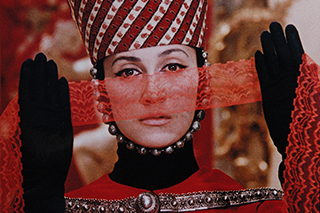
SAYAT NOVA
COLOR OF POMEGRANATES, THE
Director: Sergei Parajanov
WRITTEN BY: Sergei Parajanov
EDITING: Maria Ponomarenko
DIRECTOR OF PHOTOGRAPHY: Suren Shakhbazian
MUSICAL DIRECTOR: Tigran Mansurian
SOUND: Yuri Sayadyan
ART DIRECTOR: Stepan Andranikian, Mikhail Arakelian
STARRING: Sofiko Chiaureli (the Poet as a youth, the Poet’s Beloved, the Nun in White Lace, the Angel of the Resurrection, the Pantomime), Melkon Alekian (the Poet as a child), Vilen Galustian (the Poet as a monk), Georgi Gegechkori (the Poet in Old Age), Hovhannes (Onik) Minsasian (the King), Spartak Bagashvili (the Poet’s father), Medea Japaridze (the Poet’s mother), Grigori Margarian (Sayat Nova’s teacher)
COUNTRY OF PRODUCTION: Armenia
LANGUAGE: Armenian
COLOR INFO: Color
RUNNING TIME: 77 minutes
Restored by Cineteca di Bologna/L’Immagine Ritrovata laboratory and The Film Foundation’s World Cinema Project, in association with the National Cinema Centre of Armenia and Gosfilmofond of Russia. Restoration funded by the Material World Charitable Foundation.
And what about the fate of the picture now? Armenia showed this film, sent people to see it. I wouldn’t say that the people understand the picture, but they go as if to a celebration. […] Every layer of society is going – they sense their genes in the picture. It wasn’t the subject, it wasn’t the established canons of the fate of the poet – conflict with the tsar, conflict at court, the banishing of the poet from the palace, wordly life, the monastery – these were not the point of my scenario, but the colors, the accessories, the details, of the daily life that accompanied the poetry. Here I was trying to portray the art in life, rather than portray life in art. The other way around, so that art is reflected in life. […] The picture is very primitive in its structure: there was childhood, there was youth, there was love, there was the monastery, there were the stones. The beloved was a stone, the cell was the beloved, the beloved, her breast is glorified in verse, the rose is glorified in verse. Then there was the thought: my throat is dry, I am ill. The poet dies. Everything is so simple, clear, as in the fate of a great poet, an ashugh, a minstrel.
- Sergei Parajanov
Watching Sergei Parajanov’s The Color of Pomegranates, or Sayat Nova, is like opening a door and walking into another dimension, where time has stopped and beauty has been unleashed. On a very basic level, it’s a biography of the Armenian poet Sayat Nova, but before all else it’s a cinematic experience, and you come away remembering images, repeated expressive movements, costumes, objects, compositions, colors. Sayat Nova lived in the 18th century, but the look and movement of the film seem to have come out of the middle ages or an even earlier time: Parajanov’s cinematic tableaux feel like they’ve been carved in wood or stone, and the colors seem to have naturally materialized from the images over hundreds of years. There’s nothing else quite like this picture. For many years, it’s been a dream to see The Color of Pomegranates restored to the form originally intended by Parajanov. This restoration represents years of painstaking work by many people. As always, I would like to thank our colleagues and partners at the Cineteca di Bologna and L’Immagine Ritrovata as well as all the individuals and organizations who have supported this challenging project and dedicated an enormous amount of time and energy to preserve Parajanov’s oeuvre.
- Martin Scorsese
NOTES ON THE RESTORATION:
45 years after its Armenian release, the film is premiered at Cannes Classics in its restored version, as Parajanov originally conceived it. Both the Armenian (also known as “Parajanov’s cut”) and Russian (Sergei Yutkevic’s) versions have been preserved and restored. The restoration used the original camera negative preserved at Russia’s Gosfilmofond, as well as the 35mm dupe negative held by the National Cinema Centre of Armenia.
The original camera negative has been scanned in 4K by Gosfilmofond in Russia and restored by L’Immagine Ritrovata in Bologna. The sound restoration was made from the original magnetic track, preserved by Gosfilmofond, in addition to the Armenian reference print. A vintage print of the film, produced on Orwo stock and preserved by the Harvard Film Archive, was used as a reference for the grading phase.
The Russian version of The Color of Pomegranates has also been preserved for posterity.
Image: © Courtesy of the Parajanov Museum, Yerevan
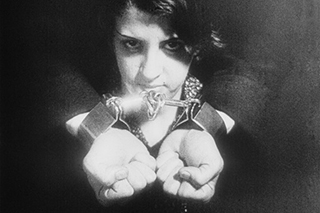
LIMITE
Director: Mário Peixoto
WRITTEN BY: Mário Peixoto
EDITING: Mário Peixoto
DIRECTOR OF PHOTOGRAPHY: Edgar Brazil
PRODUCER: Mário Peixoto
MUSICAL DIRECTOR: Brutus Pedreira (themes from Satie, Debussy, Borodin, Stravinsky, Prokofiev)
ASSISTANT DIRECTOR: Rui Costa
FROM: Cinemateca Brasileira, São Paulo
STARRING: Olga Breno (Woman #1); Taciana Rei (Woman #2); Carmen Santos (The Whore); Mario Peixoto (The Man at the cemetery); Brutus Pedreira (Man #2 and the pianist); Edgar Brazil (The Man asleep at the cinema); Faciana Rei; Raul Schnoor
COUNTRY OF PRODUCTION: Brazil
LANGUAGE: Silent
COLOR INFO: Black and White
RUNNING TIME: 120 minutes
PRODUCTION COMPANY: Cinédia
PRODUCER: Mário Peixoto
Restored in 2010 by the Cinemateca Brasileira and Cineteca di Bologna/L’Immagine Ritrovata laboratory, in association with The Film Foundation’s World Cinema Project, Arquivo Mario Peixoto, Saulo Pereira de Mello, and Walter Salles. Restoration funded by Armani, Cartier, Qatar Airways and Qatar Museum Authority.
Limite does not intend to analyse. It shows. It projects itself as a tuning fork, a pitch, a resonance of time itself. –Mário Peixoto
Then came the revelation of Limite, the first and only film by 21-year-old director Mário Peixoto. This was a film of transcendent poetry and boundless imagination. Once again, I found myself in a state of shock, not only because of the film itself, which was made in 1931 and forgotten for many years, but also for the evidence it bore, that of our creative diversity. –Walter Salles
NOTES ON THE RESTORATION:
Restored by the World Cinema Foundation at Cineteca di Bologna / L’Immagine Ritrovata Laboratory in collaboration with the Cinemateca Brasileira and Walter Salles.
Image: © Courtesy of Mário Peixoto Archive/ Cinemateca Brasileira
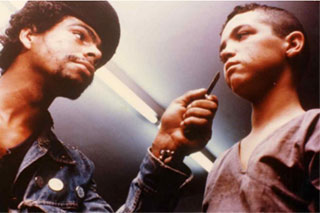
PIXOTE
PIXOTE, A LEI DO MAIS FRACO
Director: Héctor Babenco
WRITTEN BY: Héctor Babenco, Jorge Durán
EDITING: Luiz Elias
DIRECTOR OF PHOTOGRAPHY: Rodolfo Sanchez
PRODUCER: Sylvia B. Naves, Paulo Francini, José Pinto
ART DIRECTOR: Clóvis Bueno
STARRING: Fernando Ramos da Silva (Pixote), Jorge Julião (Lilica), Gilberto Moura (Dito), Edilson Lino (Chico), Zenildo Oliveira Santos (Fumaça), Claudio Bernardo (Garatao), Israel Feres David (Roberto Pie de Plata), Jose Nilson Martin Dos Santos (Diego), Marília Pêra (Sueli)
COUNTRY OF PRODUCTION: Brazil
LANGUAGE: Portuguese with English subtitles
COLOR INFO: Color
RUNNING TIME: 128 Minutes
PRODUCTION COMPANY: Embrafilme, HB Filmes
PRODUCER: Sylvia B. Naves, Paulo Francini, José Pinto
Restored by The Film Foundation’s World Cinema Project and Cineteca di Bologna at L'Immagine Ritrovata in association with HB Filmes, Cinemateca Brasileira, and JLS Facilitações Sonoras. Restoration funded by the Hobson/Lucas Family Foundation.
NOTES ON THE RESTORATION:
Restored in 4K from the 35mm original camera negative and a first generation 35mm dupe negative preserved at the Cinemateca Brasileira. In order to minimize the overall presence of mold, particularly invasive in reels 3, 5 and 6, the camera negative was wet-gate scanned at 4K resolution and digital restoration required considerable efforts. Missing frames in three different shots of reel 3 were replaced using the internegative.
The recently rediscovered original magnetic soundtrack, also affected by mold, with the oxide peeling off the base, was carefully repaired by Beto Ferraz then digitized and restored by José Luiz Sasso (ABC), sound engineer for Hector Babenco in 1981. Final color grading was supervised by cinematographer Rodolfo Sánchez using a first generation vintage 35mm print as reference.
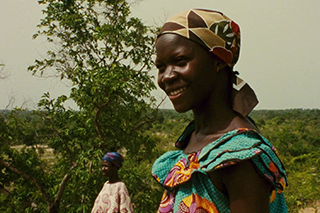
YAM DAABO
Director: Idrissa Ouédraogo
WRITTEN BY: Idrissa Ouédraogo
EDITING: Arnaud Blin
DIRECTOR OF PHOTOGRAPHY: Jean Monsigny
STARRING: Moussa Blogo, Aoua Guiraud, Assita Ouedrago, Fatima Ouedrago, Omar Ouedrago, Salif Ouedrago , Rasmané Ouedraogo
COUNTRY OF PRODUCTION: Burkina Faso
COLOR INFO: Color
RUNNING TIME: 80 minutes
Restored by The Film Foundation’s World Cinema Project and Cineteca di Bologna at L’Immagine Ritrovata laboratory, in collaboration with Les Films de la Plaine and the family of Idrissa Ouédraogo.
Restoration funded by the Hobson/Lucas Family Foundation.
This restoration is part of the African Film Heritage Project, an initiative created by The Film Foundation's World Cinema Project, the Pan African Federation of Filmmakers and UNESCO―in collaboration with Cineteca di Bologna―to help locate, restore, and disseminate African cinema.
NOTES ON THE RESTORATION:
YAM DAABO was restored in 4K using the 16mm original camera negative and magnetic sound. Color grading was finalized with the help of director of photography Sekou Ouedraogo.
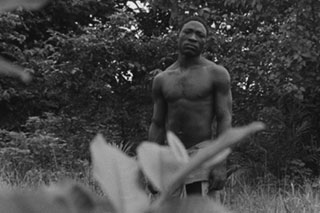
MUNA MOTO
Director: Dikongué-Pipa
WRITTEN BY: Dikongué-Pipa
EDITING: Andrée Davanture, Dominique Saint-Cyr, Jules Takam
DIRECTOR OF PHOTOGRAPHY: Jean-Pierre Dezalay, Jean-Luc Léon
STARRING: David Endéné, Arlette Din Bell, Philippe Abia, Gisèle Dikongué-Pipa, Jeanne Mvondo
COUNTRY OF PRODUCTION: Cameroon
LANGUAGE: French with English subtitles
COLOR INFO: Black and White
RUNNING TIME: 90 minutes
Restored in 2019 by Cineteca di Bologna/L’Immagine Ritrovata and The Film Foundation’s World Cinema Project. Funding provided by the Hobson/Lucas Family Foundation.
This restoration is part of the African Film Heritage Project, an initiative created by The Film Foundation’s World Cinema Project, the Pan African Federation of Filmmakers and UNESCO – in collaboration with Cineteca di Bologna – to help locate, restore, and disseminate African cinema.
NOTES ON THE RESTORATION:
The 4K restoration of Muna Moto was made from the 35mm original camera and sound negatives and a second generation dupe negative.
Despite wet-gate scanning to minimize mold damage, some sections of the camera negative had to be replaced by scanning the dupe negative.
Following director Dikongue-Pipa’s suggestion, the dupe negative was also used for the opening and closing cards which differed from the original negative. A vintage 35mm print was used as a reference for picture grading. Special thanks to Cinémathèque Royale de Belgique.
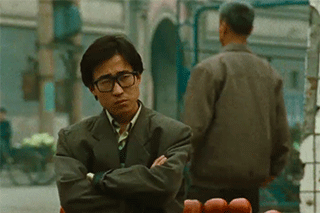
PICKPOCKET
XIAO WU
Director: Jia Zhang-ke
WRITTEN BY: Jia Zhang-ke
EDITING: Lin Xiao Ling
DIRECTOR OF PHOTOGRAPHY: Yu Lik Wai
PRODUCER: Li Kit Ming, Jia Zhang-ke
ASSISTANT DIRECTOR: Gu Zheng
ART DIRECTOR: Liang Jing Dong
STARRING: Wang Hong wei, Hao Hong Jian, Zuo Bai Tao
COUNTRY OF PRODUCTION: China
LANGUAGE: Mandarin
COLOR INFO: Color
RUNNING TIME: 108 minutes
PRODUCER: Li Kit Ming, Jia Zhang-ke
Restored by The Film Foundation's World Cinema Project and Cineteca di Bologna at L'Immagine Ritrovata laboratory in collaboration with Jia Zhang-ke and in association with MK2.
Restoration funding provided by the Hobson/Lucas Family Foundation.
NOTES ON THE RESTORATION:
The 4K restoration of XIAO WU was made from the original 16mm camera and sound negatives. The restoration process and color grading was supervised by director Jia Zhang-ke.
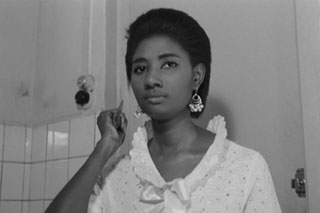
LA FEMME AU COUTEAU
WOMAN WITH THE KNIFE, THE
Director: Timité Bassori
WRITTEN BY: Timité Bassori
EDITING: Guy Ferrant
DIRECTOR OF PHOTOGRAPHY: Ivan Baguinoff
STARRING: Timité Bassori, Danielle Alloh, Emmanuel Diaman, Tim Sory, Marie Vieyra
COUNTRY OF PRODUCTION: Côte d'Ivoire
LANGUAGE: French with English subtitles
COLOR INFO: Black and White
RUNNING TIME: 77 minutes
PRODUCTION COMPANY: Société Ivoirienne de Cinéma
Restored in 2019 by Cineteca di Bologna/L’Immagine Ritrovata and The Film Foundation’s World Cinema Project. Funding provided by the Hobson/Lucas Family Foundation.
This restoration is part of the African Film Heritage Project, created by The Film Foundation, FEPACI and UNESCO – in collaboration with Cineteca di Bologna – to help locate, restore, and disseminate African cinema.
NOTES ON THE RESTORATION:
The 4K restoration of La femme au couteau was made from the 35mm original camera and sound negatives. The original camera negative was damaged by mold, dirt, and scratches, and therefore required an extensive amount of digital restoration. Director Timité Bassori supervised the picture grading.
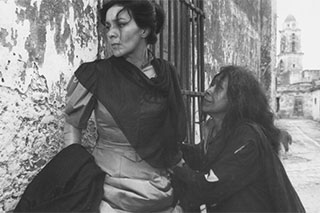
LUCIA
Director: Humberto Solás
WRITTEN BY: Humberto Solás, Julio Garcia Espinosa, Nelson Rodríguez
EDITING: Nelson Rodríguez
DIRECTOR OF PHOTOGRAPHY: Jorge Herrera
PRODUCER: Raúl Canosa, Camilo Vives
PRODUCTION DESIGN: Pedro Garcia Espinosa, Roberto Miqueli
STARRING: 1895: Raquel Revuelta (Lucía); Eduardo Moure (Rafael); Idalia Anreus (Fernandina); 1932: Eslinda Nuñez (Lucía); Ramón Brito (Aldo); Flora Lautén (Flora); 196..: Adela Legrá (Lucía); Adolfo Llauradó (Tomás); Teté Vergara (Angelina)
COUNTRY OF PRODUCTION: Cuba
LANGUAGE: Spanish
COLOR INFO: Black and White
RUNNING TIME: 160 minutes
PRODUCTION COMPANY: Instituto Cubano del Arte e Industria Cinematográficos (ICAIC)
PRODUCER: Raúl Canosa, Camilo Vives
Restored by Cineteca di Bologna at L’Immagine Ritrovata laboratory in association with Instituto Cubano del Arte e Industria Cinematográficos (ICAIC). Restoration funded by Turner Classic Movies and The Film Foundation’s World Cinema Project.
One of the abilities of cinema is to portray what a country is going through… it is about putting the country’s face on the screen, but it’s also about enlarging one’s vision of that specific place.
-- Walter Salles
ICAIC was born out of the victory of the Revolution. Those of us who were about to attempt to found a national film industry from scratch faced a set of problems that we had to resolve immediately. Our problem was a basic cultural dichotomy, as in Lenin’s thesis on national cultures. We had an elitist cultural tradition that represented the interests of the dominant class, and a more clandestine culture that had already received wide exposure; however, at some point, all artistic expression started to be converted into products of a consumer-oriented culture.
Because the elitist and the popular were so intimately tied, because petit bourgeois consciousness and influences from Europe and North America were so dominant, our general cultural panorama at the time of the Revolution was in fact a pretty desolate one. This was during the sixties, when the most important film movement was the French New Wave. Films like Alain Resnais’ Hiroshima mon amour (1959) or Michelangelo Antonioni’s L’Avventura (1960) marked most of the subsequent decade. These influences alienated us from our indigenous cultural forms and from a more serious search for a kind of cultural expression consistent with national life and with the explosive dynamism of the Revolution. Yet this was a path we clearly had to travel. Anyone who picks up the tools of artistic activity for the first time is going to be vulnerable to outside influences.
With Lucía, I wanted to view our history in phases, to show how apparent frustrations and setbacks –such as the decade of the ’30s–led us to a higher stage of national life. Whenever you make a historical film, whether it’s set two decades or two centuries ago, you are referring to the present.
Lucía is not a film about women, it’s a film about society. But within society, I chose the most vulnerable character, the one who is more transcendentally affected at any given moment by contradictions and change.
-- Humberto Solás
NOTES ON THE RESTORATION:
The restoration of Lucía was made possible through the use of the original camera and sound negative and a third generation dupe negative provided by and preserved at the ICAIC.
The state of conservation of the negative was critical, due to advanced vinegar syndrome causing portions of the film stock to colliquate (melt) or stick together; the negative also appeared heavily warped and buckled, causing the image to lose focus throughout the film. Despite undergoing several weeks of drying and softening treatments, large portions of 8 (out of 18) reels could not be used. These sections were replaced with a second generation duplicate preserved by the Bundesarchiv-Filmarchiv since
the film had been distributed in East Germany in the late 1960s.
All the elements were wet-scanned at a 4K resolution to eliminate or reduce heavy scratches and halos. Additional documentation was used to confirm that the film had been shot on two different film stocks–Orwo and Ilford–and graded according to the time-period depicted in the film. A previously unscreened vintage print preserved at the BFI National Archive was used as a reference.
The original soundtrack was in fairly good condition, with the exception of uneven and inconsistent background noise detected in
the mix which required careful dynamic noise reduction.
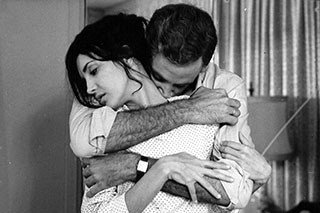
MEMORIES OF UNDERDEVELOPMENT
MEMORIAS DEL SUBDESARROLLO
Director: Tomás Gutiérrez Alea
WRITTEN BY: Tomás Gutiérrez Alea
EDITING: Nelson Rodríguez
DIRECTOR OF PHOTOGRAPHY: Ramón F. Suárez
PRODUCER: Miguel Mendoza
STARRING: Sergio Corrieri (Sergio Carmona Mendoyo), Daisy Granados (Elena), Eslinda Núñez (Noemi), Omar Valdés (Pablo), René de la Cruz (Elena’s brother)
COUNTRY OF PRODUCTION: Cuba
LANGUAGE: Castilian with English an French subtitles
COLOR INFO: Black and White
RUNNING TIME: 97 minutes
PRODUCTION COMPANY: Instituto Cubano del Arte e Industria Cinematograficos (ICAIC)
PRODUCER: Miguel Mendoza
Restored by Cineteca di Bologna at L’Immagine Ritrovata laboratory in association with Instituto Cubano del Arte e Industria Cinematográficos (ICAIC). Restoration funded by The George Lucas Family Foundation and The Film Foundation’s World Cinema Project.
I remember it as if it were yesterday. The film begins. A dizzying sound of drumbeats invades the movie theatre. Pulsating bodies take the screen. Dozens, hundreds of people, mostly blacks and mestizos, are dancing. Everything is movement and ecstasy. All of a sudden, gunshots ring out. A man lies on the ground - a lifeless body. Surrounding him, the deafening music and the rhythm continue. The beat is frenzied. The camera travels from face to face in the crowd until it stops at a young black woman. The frame freezes on her trance-lit face.
Thus begins Memorias del subdesarrollo, and watching it was like a shock to me. The film navigated between different states - fiction and documentary, past and present, Africa and Europe. The dialectic narrative took the form of a collage, crafted with an uncommon conceptual and cinematographic rigor. Scenes from newsreels, historical fragments and magazine headlines mixed and collided. In Memorias del subdesarrollo, Alea proved that filmic precision and radical experimentation could go hand in hand. Nothing was random. Each image echoing in the following image, the whole greater than the sum of its parts. Until then, having spent part of my childhood in Europe, I had a better knowledge of Italian neorealism and the French new wave than I did of the cinematic currents in Latin America. I admired Rossellini and Visconti and the early films of Godard and Truffaut - and with good reason. On taking the camera to the streets and showing the faces and lives of ordinary people, the neorealists and the directors of the nouvelle vague had fomented a true ethical and aesthetic revolution in films.
But Memorias del subdesarrollo carried with it something more. A point of view that was vigorous, original and, more importantly, pertained directly to us, Latin Americans. It was like a reverse angle - one that seemed more resonant to me than that which was prevalent in other latitudes.
- Walter Salles
I remember that soon after the Revolution, everybody (and I mean everybody) thought that our island could be transformed, from one moment to the next, into a sort of Switzerland of the Caribbean. We had everything we needed: the people, the weapons, the enthusiasm, and the opportunity to re-build our country from scratch. Only later did we understand that we were basically a farming country, that industrialization would take more time than we had hoped, and that our island was small, poor and underdeveloped. All of a sudden, everything that had once seemed within arm’s reach was further and further away. The new reality is a radical one. We don’t just need a new economy, new politics, a new society. We need a new way of thinking, and this will take longer. For now, we have to accept who we are and keep fighting, which brings me back to the concept of underdevelopment, but this time, of a moral and aesthetic nature.
Every day, to build our society, we have to confront the type of people we despise: those who think they are the only custodians of the Revolution, who believe only they know socialist morality, and who have institutionalized mediocrity and provincialism. The bureaucrats, with or without a desk, who talk to our people as one does with children, telling us what to show them, how to address them. And since these bureaucrats believe that our people are not ready to know the whole truth, they are ashamed of them, and suffer from a national inferiority complex. I hope, with my film, to annoy, provoke and upset all of them.
- Tomás Gutiérrez Alea
NOTES ON THE RESTORATION:
The restoration of Memorias del Subdesarrollo was made possible through the use of the original camera and sound negative and a vintage duplicate positive provided and preserved by ICAIC.
The camera negative is affected overall by advanced vinegar syndrome – in particular where the duplicate negatives of archival footage are edited into the film – causing a consistent ‘halo’ on the image. Most of reel 3 was irreversibly crystallized and half of reel 4 was badly compromised by decay. The duplicate element was used to replace the image in those portions. The camera negative was scanned at 4K, using wet-gate only for the most problematic sections.
The dual bilateral variable area sound negative showed a poor photographic definition, resulting in a harsh and raspy sound, with noticeable image spread distortion. Scratches, dirt and dust on the emulsion caused heavy crackles and clicks during reproduction. Sound restoration was able to reduce these issues considerably.
